Menus
- Ninja on weight loss course
- Successfully slimmed down
- Brakes and chassis
- Drive and performance
- Noticed
- Specifications Kawasaki ZX-6R
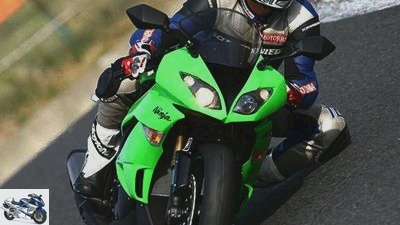
Photo: Kawasaki
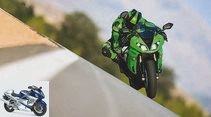
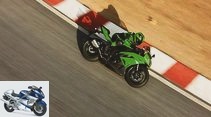
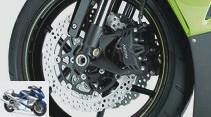
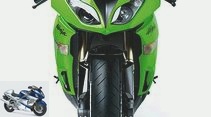
24 photos

Kawasaki
1/24
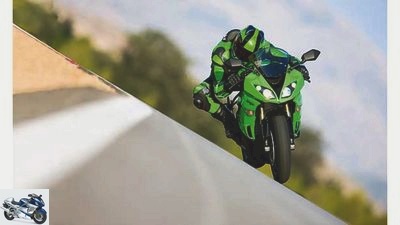
Kawasaki
2/24
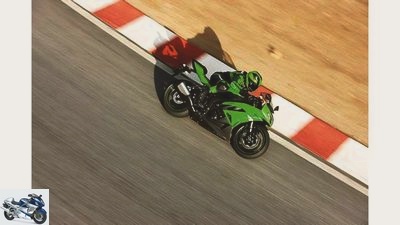
Kawasaki
3/24
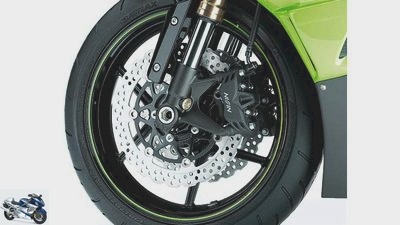
Kawasaki
4/24
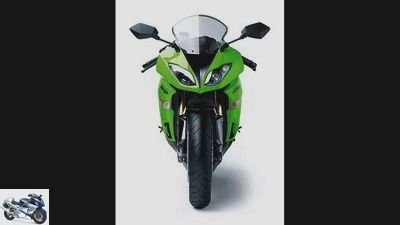
Kawasaki
5/24
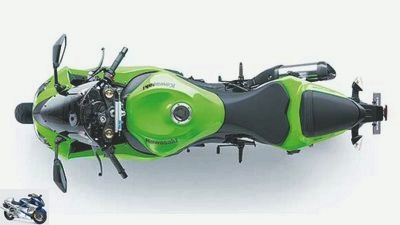
Kawasaki
6/24
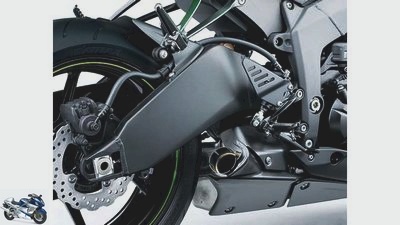
Kawasaki
7/24
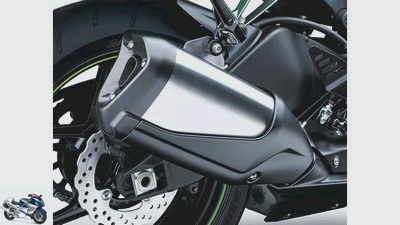
Kawasaki
8/24

Kawasaki
9/24
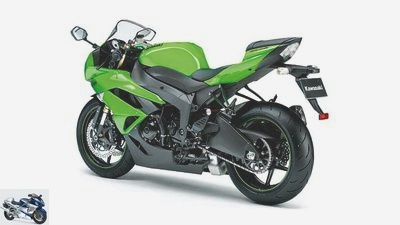
Kawasaki
10/24
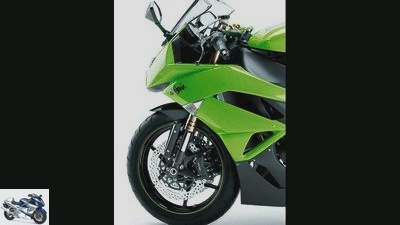
Kawasaki
11/24
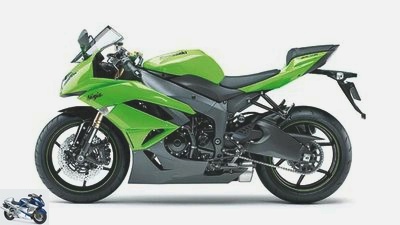
Kawasaki
12/24
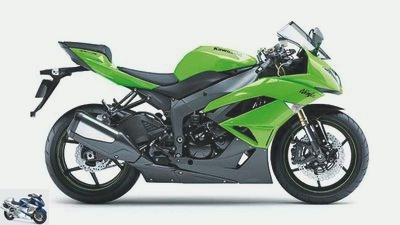
Kawasaki
13/24
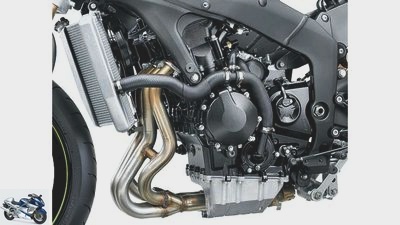
Kawasaki
14/24
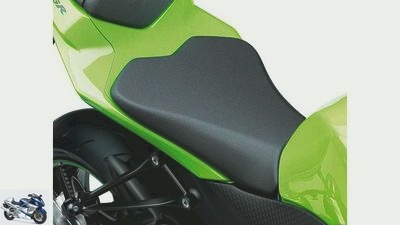
Kawasaki
15/24

Kawasaki
16/24
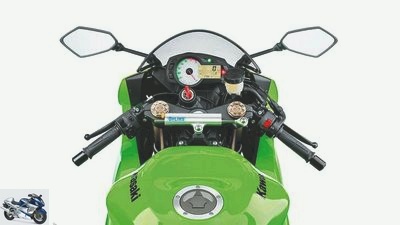
Kawasaki
17/24
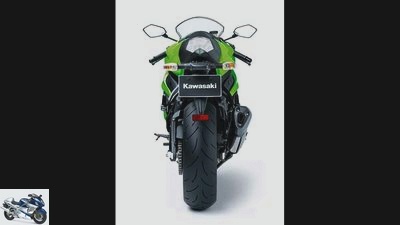
Kawasaki
18/24
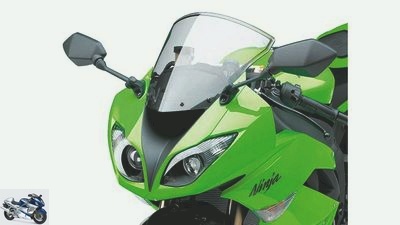
Kawasaki
19/24
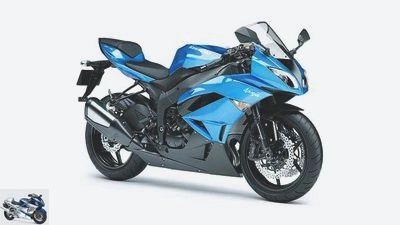
Kawasaki
20/24
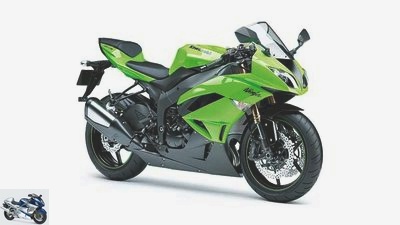
Kawasaki
21/24
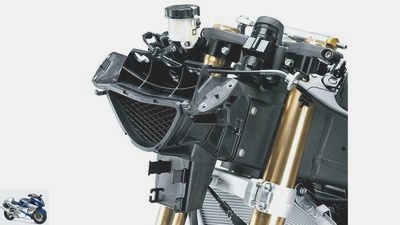
Kawasaki
22/24
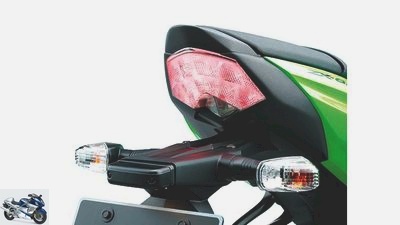
Kawasaki
23/24
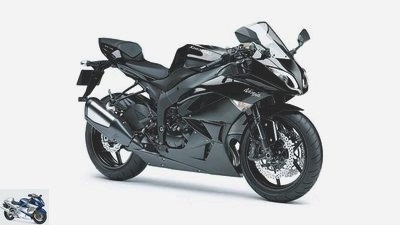
Kawasaki
24/24
Driving report Kawasaki ZX-6R (2009)
Ninja on weight loss course
Her weight was the highest among the Supersport 600s. But that’s over now, says Kawasaki. The new ZX-6R has even more to offer than just a diet.
Mostafa Karim knows how to raise expectations. “We’re not here just because the ZX-6R has a new fairing,” Kawasaki’s press chief opens the presentation of the green super sports car. It should have become more powerful in the middle of the speed and also significantly lighter. And of course noticeably easier to handle. Equipped with a new type of fork. Developed here, on Kawasaki’s own Autopolis race track on the southern Japanese island of Kyushu. Big words that arouse curiosity about the first test drive. Nevertheless, despite all the promised inner values, it is worth taking a closer look at the new clothes. Because the ZX-6R is compact and streamlined after its weight and fitness regimen, as one would expect from a super athlete. The shape of the tank is borrowed from the ZX-10R, the rear is crisp and narrow. And the exhaust, which it once housed, is again conventionally at half-height on the side. What serves to centralize the masses and, in addition to reducing weight, is supposed to heat up the handling. Theory is well and good. But now words should be followed by deeds. First impression when boarding the five millimeter lower bench seat: the seating position is pleasantly compact, the flat arched tank makes it easy to reach the handlebar stubs, which are now closer to the driver and turned a little more inward. Feels good. The mechanics pull the tire warmers from the Bridgestone BT-003 in a soft mix of 4 ?? in series the ZX-6R will roll onto the BT-016. Autopolis can come.
The first tentative laps on the tricky, winding, mountain-and-valley railway, garnished with super-fast passages, crests, compressions, hanging curves and secluded turning points, which lies in the middle of a volcanic landscape, quickly show that there is Kawasaki has successfully embraced the topic of handling. The new one can be conducted with a light hand. Takes alternating curves in a storm, jerks, thrown jaggedly from left to right, but sometimes audibly with the handlebars. For such cases, however, an adjustable steering damper from Ohlins is now on board.
Successfully slimmed down
Kawasaki says the six has slimmed down ten kilograms. Which does not make it the lightest 600, but at least brings it on a level with the competition. The new exhaust alone saves one kilogram. Lighter camshafts, magnesium engine covers that are fitted with removable soundproofing elements on the inside, through to the injection bridge, which has been lightened by the gram: the redesigned engine contributes three kilograms. Another two are the new frame, whose stiffness balance has been revised with more flexible main profiles, stiffer front engine mounts and swing arm mounts for more feedback and traction. The rest is made up of attachments, brackets and small parts.
The easier handling is not just a result of the lower weight. Rather, the steering angle, which is one degree steeper at 66, and the masses concentrated closer to the center of gravity do their part. For this purpose, the motor was rotated around the output shaft and thus raised at the front, which raises its center of gravity by 16 millimeters. Before you can really savor the gain in dynamics, you have to make a pit stop. The fork and shock absorber are equipped with harder springs (9.25 instead of 8.75 kg / cm at the front, 10.0 instead of 9.25 kg / cm at the rear) and somewhat firmer damping. It is still allowed for the racetrack? especially in the back ?? be something more. Therefore, a little more preload and damping, and back into the fray. The six reacts fine to such changes, after one or two turns a suitable setup is found. So attack, end of start-finish, around 250 on the clock, hard in the iron and from sixth back to second. The turning point for the narrow, outwardly hanging downhill right is hidden until the end behind a hilltop. The Kawa turns in as clean as a flash, a pleasure, circles like clockwork through the crown and fires precisely in quick arcs on the targeted line again towards the edge of the curve.
Brakes and chassis
Kawasaki
Kawasaki ZX-6R: Lighter, stronger, better?
Two things become clear in such maneuvers. First: The brakes of the Kawa are outside the criticism. Stable, clear pressure point, splendid, finely adjustable bite. Second: The braking stability is remarkable, not only because of the excellent slipper clutch. The fork, dubbed Big Piston Fork (BPF), vehemently opposes diving too fast and too deep. The cartridge insert was omitted, the damper piston now runs directly in the sliding tube. By eliminating the insert with a diameter of 37 millimeters (previously around 20 millimeters), it can be significantly larger. The oil acts on around 3.5 times the area, which makes it much easier to control the oil flow and make adjustments. According to the Showa technicians, there should be no disadvantages due to the larger piston circumference and correspondingly greater friction. In return, the fork builds up damping faster with a small stroke and minimizes immersion during heavy braking maneuvers. Quite apart from that, this construction method saves a lot of parts and thus above all costs and about 370 grams in weight. In principle, the Big Piston Fork is the same as the construction of forks before cartridges were introduced.
Despite the revision and tighter coordination, the shock absorber, which can be set to high and low speed in the compression stage, only plays second fiddle, because in terms of feedback and control it does not quite come close to the upside-down fork. The ZX-6R certainly dashes through high-speed arcs in a stable manner, but bumps and steps, some of which the Autopolis track has ready, penetrate the driver noticeably with a streamlined setup. On the other hand, the green one stays on course even when the pilot closes the throttle and opens it again. No jerk when applying the gas spoils the course, the load change reactions are pleasantly soft, although the throttle response should be a bit more spontaneous for fans of dynamic acceleration.
Drive and performance
Kawasaki
The ZX-6R has more to offer than a slimming diet.
Intake funnels with a longer and a shorter side on the throttle valve housings, which are ten millimeters longer, revised intake ducts and new intake camshafts should help the engine to develop fuller, more even power, as does the completely new exhaust system. And that without sacrificing top performance. On the contrary, Kawasaki promises three more horsepower. Newly designed pistons ensure more effective combustion, their molybdenum-coated shirts and the reduced tension on the piston rings ensure lower friction losses. Only when it comes to the material of the valves, Kawasaki continues to rely on steel instead of light titanium.
In fact, the Kawa four pulls out more emphatically from middle positions than its predecessor and then powers up the speed ladder evenly. A comparison will of course only show whether it can keep up with the best in its class in terms of torque. In any case, it delivers its performance nicely evenly and easily controllable. Wringing it out to the red area at 16,200 rpm is of little use, however, as the performance curve flattens out a bit from 14,000 rpm. It is better to request the next gear from the precise gearbox a little earlier and use the remaining range as an over-rev reserve when the pressure is on. In any case, the Kawasaki is prepared for the encounter with the other 600s. That leaves the price. It has not yet been finalized and, according to Kawasaki, will be perhaps a hundred euros higher than the predecessor. This would mean that it would have to stay below the 11,000 euro mark.
Noticed
plus
+ Easy handling
+ Remarkable braking stability
+ First class slipper clutch
+ Brakes perfectly
minus
– Draft shield tightly dimensioned
– Throttle response could be a little more spontaneous
Specifications Kawasaki ZX-6R
engine
Water-cooled four-cylinder four-stroke in-line engine, two overhead, chain-driven camshafts, four valves per cylinder, bucket tappets, wet sump lubrication, injection, Ø 38 mm, regulated catalytic converter, 315 W alternator, 12 V / 8 Ah battery, mechanically operated multi-plate oil bath clutch (Anti-hopping), six-speed gearbox, chain, secondary ratio 43:16.
Bore x stroke 67.0 x 42.5 mm
Displacement 599 cm³
Compression ratio 13.3: 1
Rated output 94.1 kW (128 hp) at 14,000 rpm
Max. Torque 67 Nm at 11800 rpm
landing gear
Bridge frame made of aluminum, upside-down fork, Ø 41 mm, adjustable spring base, rebound and compression damping, two-arm swing arm made of aluminum, central spring strut with lever system, adjustable spring base, rebound and compression damping, double disc brake at the front, Ø 300 mm, four-piston fixed calipers, disc brake rear, Ø 220 mm, single-piston floating caliper.
Cast aluminum wheels 3.50 x 17; 5.50 x 17
Tires 120/70 ZR 17; 180/55 ZR 17
Dimensions + weights
Wheelbase 1400 mm, steering head angle 66.0 degrees, caster 103 mm, spring travel f / r 120/134 mm, tank capacity 17.0 liters.
Two year guarantee
Colors blue, green, black
Price not specified
Related articles
-
fact 24 pictures Kawasaki 1/24 Kawasaki 2/24 Kawasaki 3/24 Kawasaki 4/24 Kawasaki 5/24 Kawasaki 6/24 Kawasaki 7/24 Kawasaki 8/24 Kawasaki 9/24 Kawasaki …
-
Driving report Ducati 1098 R No compromises Your sole purpose is to achieve race victories. This is what the 1 098 R was built for. And for that she got so …
-
Driving report Kawasaki ZZR 1400
Artist Driving report Kawasaki ZZR 1400 (2006) Full program With the ZZR 1400, performance is program: 200 HP make it the most powerful series machine of…
-
Benelli Leoncino driving report
Benelli 24 pictures Benelli 1/24 Benelli Leoncino. Benelli 2/24 Benelli Leoncino. Benelli 3/24 Benelli Leoncino. Benelli 4/24 Benelli Leoncino. Benelli …
-
Kawasaki Z 1000 in the driving report
Kawasaki 34 pictures Kawasaki 1/34 Dirty, brutal, extreme. The new Z 1000 has its eyes on evil. Kawasaki 2/34 Kawasaki 3/34 Kawasaki 4/34 Kawasaki …
-
Kawasaki Z 900 in the driving report
Kawasaki 17 pictures Kawasaki 1/17 Kawasaki Z 900 Kawasaki 2/17 Dipped in bright green, the new tubular steel lattice frame takes the engine as a supporting …
-
BMW individual test BMW HP4 High Performance: at full speed with the BMW HP4 The BMW S 1000 RR is not only a great choice on the road, but also on the …
-
Driving report MBS 656 the high-light 168 kilograms light, 125 HP strong and in the most radical version almost 100,000 marks expensive. MOTORRAD turned with the MBS …
-
Driving report MV Agusta Brutale 1080
Artistic driving report MV Agusta Brutale 1080 Nomen est omen Finally a Brutale has caught up with her name: With a displacement of 1080 cm³ she tears up like still …
-
Driving report Superbike-Kawasaki Tom Sykes
Kawasaki 20 pictures Kawasaki 1/20 Kawasaki 2/20 Kawasaki 3/20 Kawasaki 4/20 Kawasaki 5/20 Kawasaki 6/20 Kawasaki 7/20 Kawasaki 8/20 Kawasaki 9/20 pic …